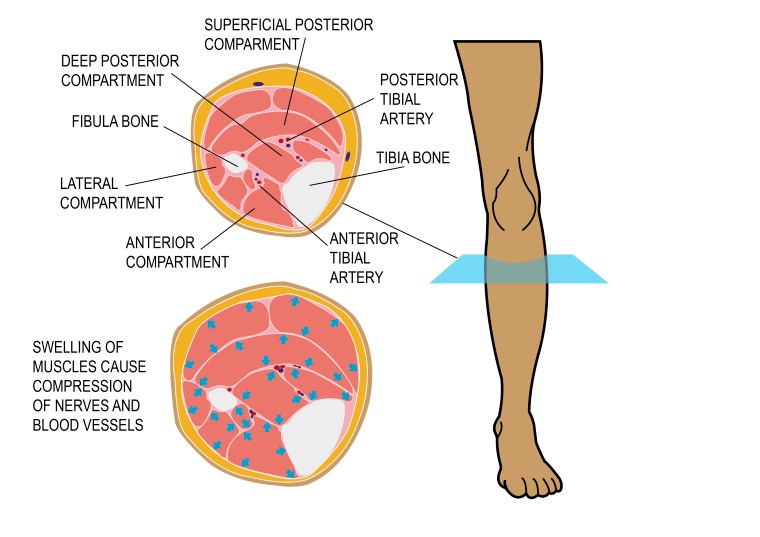Compartment Syndrome
It is a clinical picture characterized by the deterioration of blood supply and oxygenation of muscle and nerve tissues due to the increase in pressure for the environment in closed spaces containing vessels and nerves.
There are many conditions that can lead to compartment syndrome. Compartment syndrome may occur by increasing the contents of the compartment such as bleeding, vascular injury, bleeding disorders, burns, snake bites, infection, or by reducing the volume of the compartment in applications used in the treatment of bone fractures such as tight bandages and plasters.
Compartment syndrome can occur acutely or chronically. Acute compartment syndrome occurs after bone fractures, tight bandage or angle applications.
Compartment Syndrome Diagnosis
1) Paresthesia (Sensory Defect)
Sensory disorders such as numbness and tingling.
2) Pain
It is due to nerve damage. It is the earliest sign. The intensity of pain increases by pressing on the compartment.
3) Pallor (pale)
It occurs due to the inability to feed the tissue due to pressure.
4) Paralysis (Muscle Paralysis)
The cessation of contraction of the muscles. It happens because the veins are under pressure and cannot bring enough oxygen and nutrients to the muscles.
5) Pulselessness
There is no pulse in the distal part of the affected vein. But it is not a very objective situation. Other symptoms are more important to us. If it is not taken in the early period, signs of arterial injury occur.
6) Pressure
As I mentioned in the diagnosis of compartment syndrome, there will be an increase in pressure. The pressure of closed environments is 0-10 mmHg. Above this, we call it the pressure height.
The first thing we will do in the treatment of compartment syndrome is to remove the pressure around the compartment.
In case of plaster or bandage, we loosen it immediately so that we do not cause an irreversible situation.
Also, the affected limb should be held at heart level and ice should be applied there. If the pressure is removed too soon, the muscles, vessels and nerves, which are the structures under pressure, will resume their previous duties.
That’s why early intervention is very important.The main treatment is the surgical procedure that we will do.
For this, we perform what we call a fasciotomy. Fasciotomy means cutting the fascia (membrane) around the compartment. Thus, we reduce the pressure inside the compartment. Compartment syndrome can cause various complications when treatment is delayed.
Muscle, nerve and vascular injuries, loss of sensation or impaired sensation, bone or other tissue infections, contractures, etc. such complications exist.






